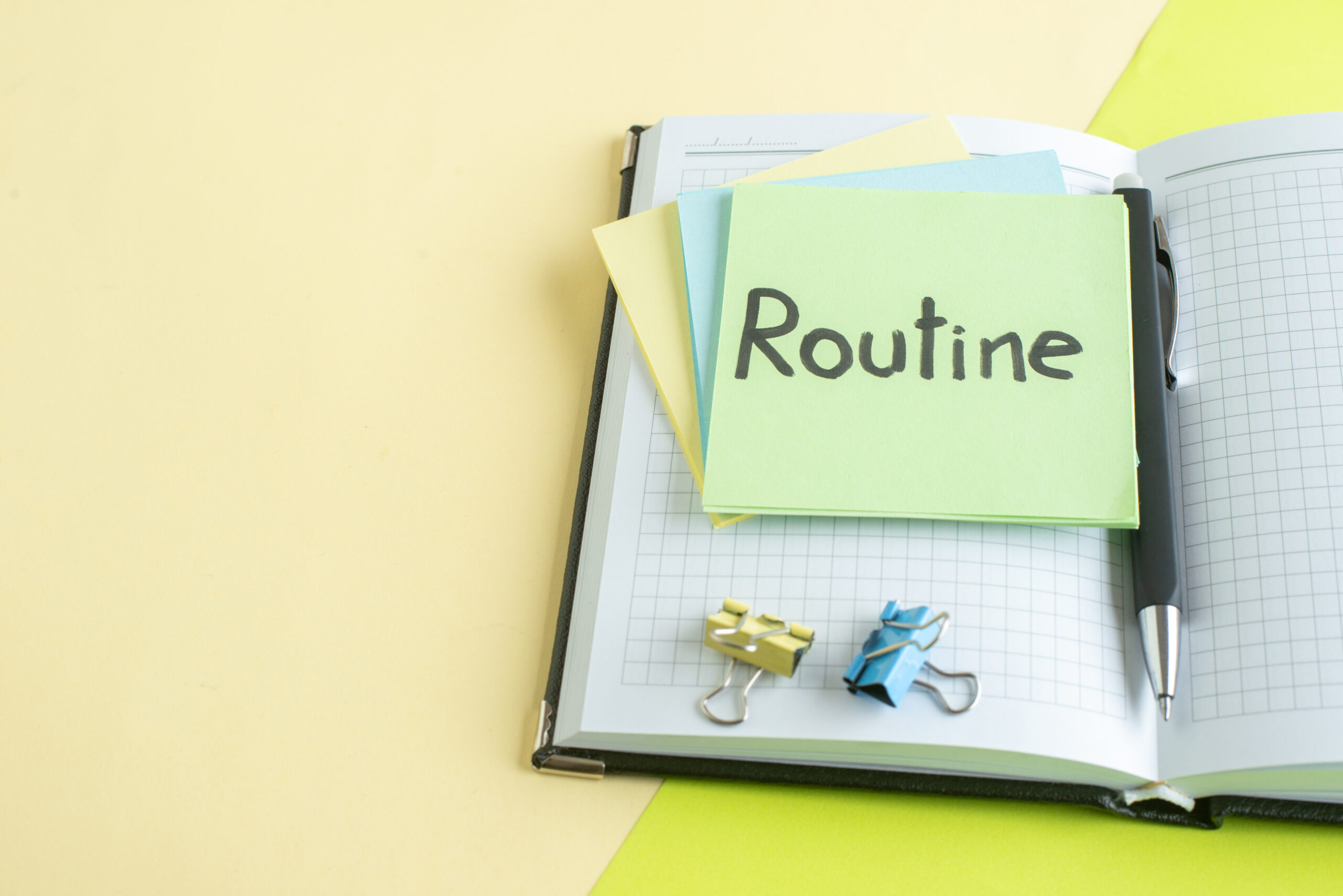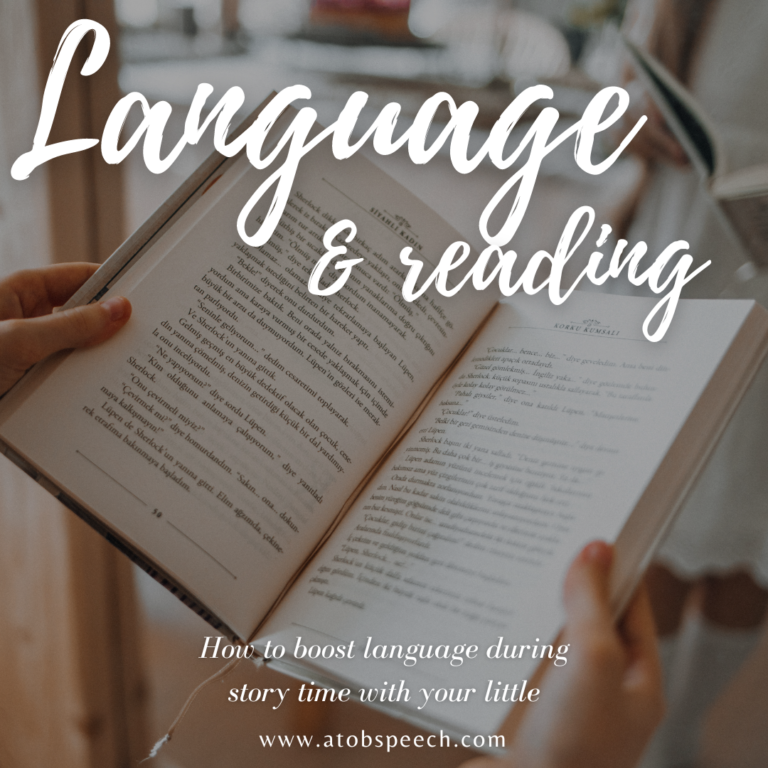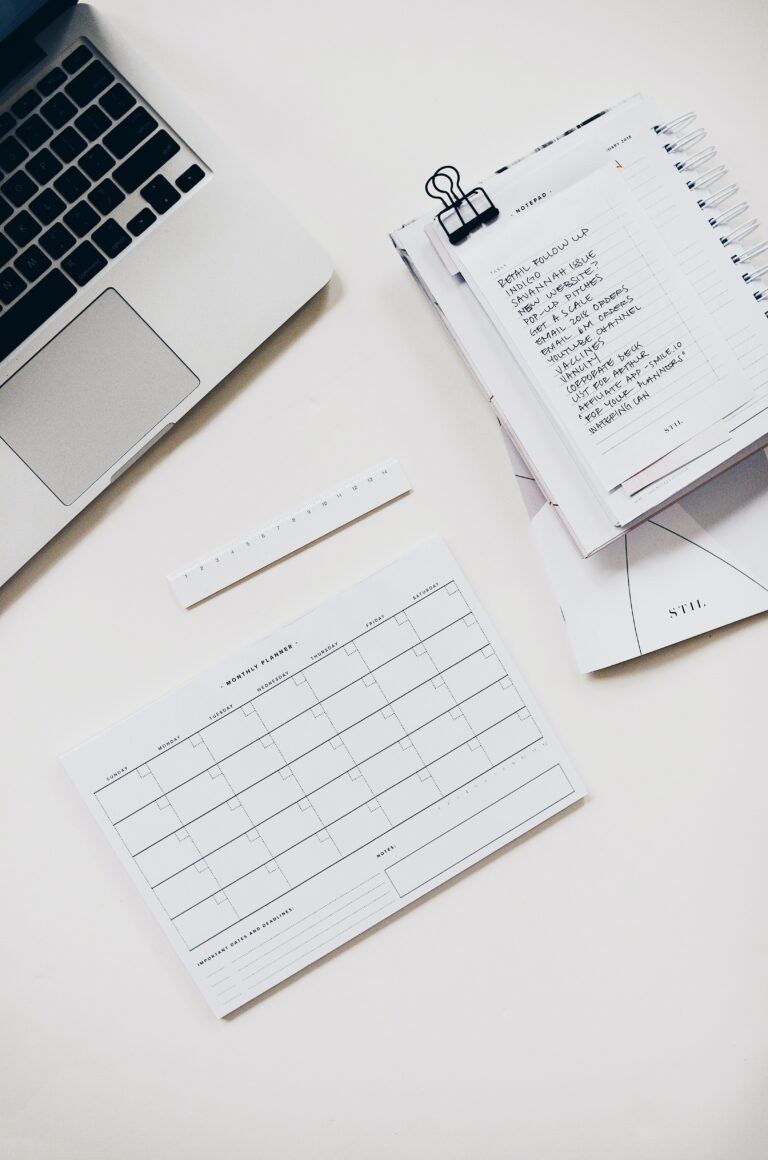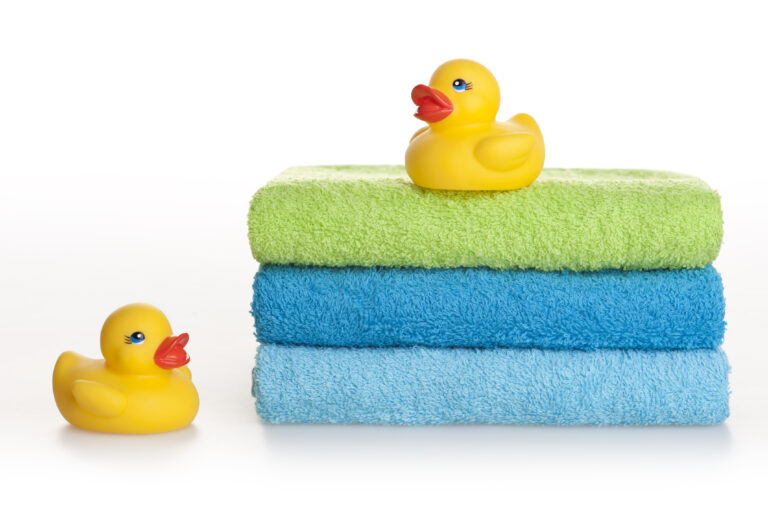Everyday routines are more than just the steps we take to get through our day; they are opportunities for growth and LOTS of language! In addition to being a great way to incorporate language, routines are the tasks that we complete each and every day….so adding strategies into those routines automatically means that they will happen each day (plus, it doesn’t take any more time out of your busy day=less overwhelming!) That’s why we LOVE routine-based therapy at A to B Speech Therapy and we almost always incorporate this into our sessions for early language development. For children undergoing speech therapy, these routines can become powerful tools for reinforcing communication skills. This blog post will explore how routine-based speech therapy can be seamlessly woven into daily activities to enhance language development.
Routine-Based Speech Therapy: What is it
Routine-based speech therapy involves incorporating language learning into the regular routines of a little’s day. It’s a naturalistic approach that emphasizes learning in context, making it relevant and meaningful as well as easy for the parent to implement! A huge part of routine-based speech therapy is evaluating current routines, areas for growth, and how we can incorporate targeted learning into those daily routines! Many times, your SLP will teach you a strategy or specific word targets to work on during routines to make this easier! Keep in mind that this blog is not a substitute for professional advice…please don’t hesitate to reach out to us if you’d like to learn more and ask your SLP about how they like to incorporate routine-based therapy and if this is a plan that would fit your child’s specific language-learning needs! Every little is different and has different needs, so finding a therapist that you feel fully supports you and puts an effort into understanding your daily routine and your family is a huge piece of routine-based therapy!
This post may contain affiliate links, this means that we could receive a commission when you click on one of our links and purchase something that was recommended. In some cases, we may be compensated for writing this post. Don’t worry, it is at no extra cost to you and all opinions and recommendations shared are truly our own! See our full policy here
Why are routines helpful for littles?
Routines are so integral to the life of a little because they provide predictable and stable structure within their day. Routines are also conducted in the natural environment that your little is used to and, therefore, skills that he or she learns will be easily translated into their daily life. Daily routines are prediction, functional and they happen multiple times throughout each day (1)…this means that they are automatically repetitive! Research also tells us that daily routines provide a foundation for children’s development across cognitive, motor, and adaptive skills(3)!
I want more info…what might a routine-based speech therapy session entail?
Routine-based therapy involves planning together as a team! Each SLP implements this a little bit differently, but here at A to B Speech, we like to include the following…think of these as a cycle, where we end one session in a phase and pick up another at the next! We may also move back and forth between these phases as we need to(2)!
- Planning: The SLP and parent/caregiver talk about what actions should be taken throughout the week following speech sessions and talk about what goals they would like to target for the little. We will look at a combination of things to help us plan (e.g., goals/objectives, environments, activities/routines, current stratenghts and challenges, data about progress, parent/caregiver concerns, etc.).
- Observations: The SLP incorporates two-way observations, where the parent or caregiver gets to observe the SLP using a strategy or targeting a skill and then the SLP observed the parent/caregiver carrying out the planned action.
- Brainstorming: After observations, the parent and SLP have a discussion about what they think worked well during the observations and little shifts that we might consider making in the coming week to fine-tune the strategy or routine to better align with the goals that are in your little’s treatment plan. The SLP might also use this time to point out things that you, as the caregiver, are already doing that are supporting development.
- Practice time: the parent or caregiver gets to practice using the strategy throughout the week in the designated routines and elsewhere
- Reflection: The SLP may have a variety of ways of carrying out this step, like a worksheet/workbook, some ‘think about’ prompts, or even just a follow-up conversation at the next therapy session (this will likely depend on each individual therapist as well as what is easiest for you and your family). This step involves the parent/caregiver reflecting on what they think went well over the course of the week and what areas they might want additional support for.
- Conference: This is where the SLP and caregiver can really talk about specific needs and things that might need to be adjusted as well as things that went well. This conference is based on the SLP’s observation as well as the reflections that were shared by the caregiver. As a SLP, this part of the process is one of my favorite parts of therapy because it is where we really get to reduce that stress and find strategies and helpful tips in areas that are needing growth as well as boost up caregivers for all of their hard work! This is also where our cycle begins again as we start planning for the next week’s goals. We might have a variety of tools to support you in this process. At A to B Speech Therapy, these tools include handouts, worksheets, play ideas, videos, and access to mid-week ‘quick chat’ messaging with your SLP if you have questions about a strategy and don’t want to wait all week!
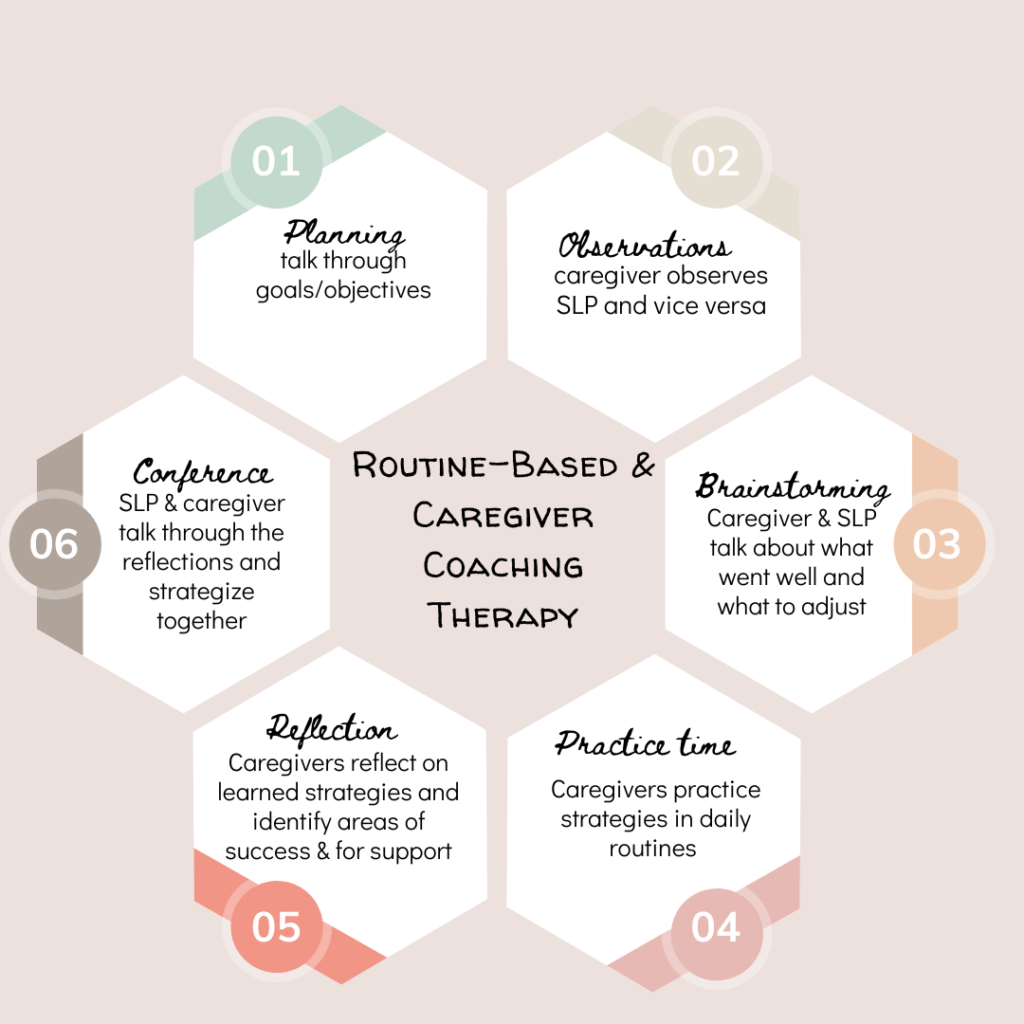
What are some examples of a routine that may be used for language?
- The routines that you focus on with your little will depend on your collaboration with your SLP to help determine which routines are best suited for your family and tailored to the goals that you have set for your little. Here are just a few examples of routines that occur daily that might be a focus in therapy:
- Mealtime, morning routine, evening routine, snack time, bath time, getting dressed, chores, play time, bedtime, transition to and from activities, grocery store, playground…and so much more!
What will I collaborate on with my SLP?
Working closely with your little’s speech therapist can help you tailor your routines to target specific speech and language goals. We hope this gives you a little overview about what to expect, but, ultimately, it is your little’s SLP that will help guide you along the way and provide the specific activities and strategies that will align with your therapy sessions. You can book a free consultation with us here if you’d like to learn more about whether this would be a good fit for your little or check out this page if you are looking for a list of speech therapists in your area!
Final Thoughts:
Routine-based speech therapy is a holistic approach that empowers parents and caregivers to be active participants in their child’s language development. By embedding speech therapy into daily routines, you create a supportive and enriching environment that encourages continuous learning and practice. Remember, every moment has the potential to be a learning moment! Are you interested in learning more? We made 4-week email ‘bootcamp’ for parents and caregivers that talks about 3 different routines and provides examples of general language strategies that your SLP might recommend. Remember to check in with your SLP for specific information! If you would like access to these exclusive email freebies, click here to sign up for our newsletter!
Sources:
(1)Kashinath, S., Woods, J.W., & Goldstein, H. (2006). Enhancing generalized teaching strategy use in daily routines by parents of children with autism. Journal of Speech, Language, and Hearing Research, 49, 466-485.
(2)The SLT Scrapbook- Early Intervention Caregiver Coaching Handbook
(3) Spagnola & Fiese, 2007, cited by Romano, M, Lorio, C, Delehanty, A, Euginio, J., Abarca, D., Trivedi, B, Brown, J (2022). ‘Family routines within caregiver implemented interventions: A scoping review’. Journal of Early Intervention. Vol 44. Pp. 371-392

